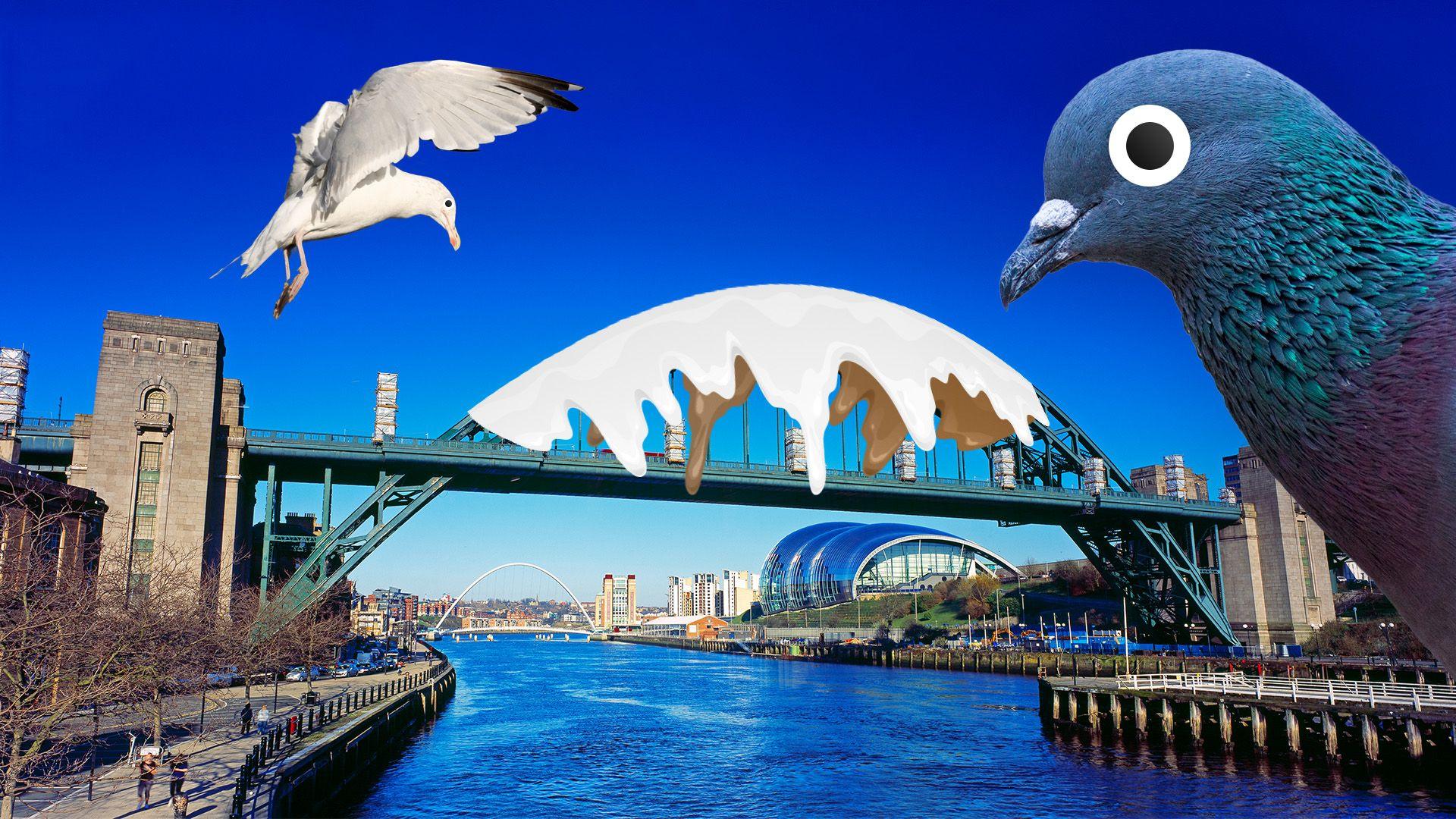Bird poo bridge: Nine TONNES of mess removed from historic landmark

The Tyne Bridge is being transformed, with tonnes of bird poo being removed in the process
- Published
It's not unusual to see a few pigeons around a city, but one bridge in Newcastle has proven such a popular hangout for birds that nine tonnes of poo has been removed from the structure.
The Tyne Bridge is a historic landmark that links Newcastle with the town of Gateshead over the River Tyne.
It is currently undergoing repairs and renovations, which began with essential cleaning to take away all signs of it being used as a handy bird toilet.
This amount of poo is not to be sniffed at - in fact it weighs the same amount as three large family cars.
More bird poo news
- Published13 March
- Published21 March
- Published3 May 2023
Why is there so much bird poo on the Tyne Bridge?
Kittiwakes nest on the Tyne Bridge
The Tyne Bridge opened in 1928. The current restoration project started a few months ago and is set to take around four years. It's hoped it will be finished in time for the bridge's 100th anniversary in 2028.
The bridge has been a place for birds to nest for 96 years.
In fact, the structure is seen as so important to birds that temporary accommodation has been planned for them during the bridge's restoration.
Kittiwakes have been nesting around the quayside since the 1960s and return each spring to build nests and breed.
As scaffolding is covering part of their usual nesting sites, the council has built two "hotels" on top of the bridge's towers, with each able to house 150 nests.
Bird mess is not a new problem for the bridge. In recent years metal trays have been installed underneath the structure, to protect dinners in caf茅s below from falling poo.
What will happen to the Tyne Bridge bird poo?
Kittiwake "hotels" have been built on the bridge's towers
A small amount of bird poo can be used to provide nutrients to soil and to help plants grow - but nine tonnes is a lot to deal with.
The waste is classified as hazardous. So, in this in this case the droppings are collected by contractors and taken to a licensed waste carrier to safely dispose of it.
More stories from our feathered friends
- Published23 June 2020
- Published4 January 2022
- Published7 May
